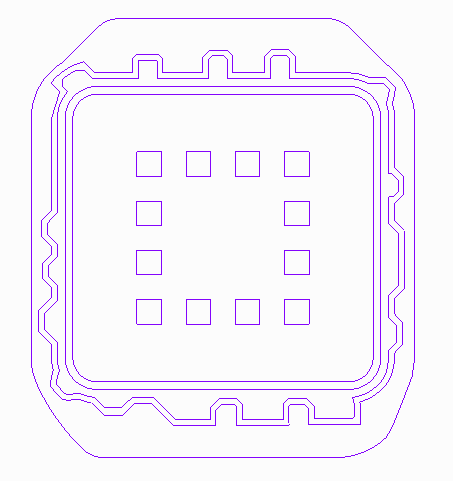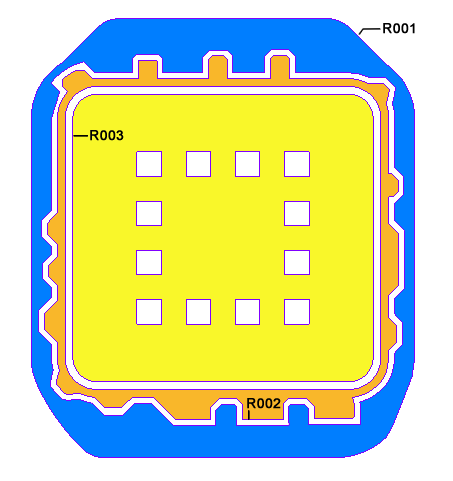[RINGS]
The RINGS section is used to describe metal on the bonding layer. We call it RINGS but in fact it can be used to define any metal on the bonding layer and even non-metal geometries. Generally, the RINGS section is not "hand" created from a spreadsheet but generated by a CAD translation or extraction program.
Basic Syntax
[RINGS]
NAME NET_NAME NUMBER_OF_POLYGONS WIDTH NUM_OF_VERTICES
X,Y
X,Y
X,Y
NUM_OF_VERTICES
X,Y
X,Y
X,Y
NAME - each ring entity must be assigned a name. No special use is made of names by the AIF parser but a user could make special use of the name.
NET_NAME - assuming the ring is a conductor, it should have a valid net name. If a ring is "not" a conductor, then some sort of placeholder name should be used i.e. DUMMY.
NUMBER_OF_POLYGONS - If this piece of the ring is a simple closed region it will consist of one polygon. However if it contains "cutouts" then there might be more than one polygon.
WIDTH - for a region the width = 0. However one could represent a trace using a finite width.
NUM_OF_VERTICES - the number of vertices (for this polygon) to follow. This makes life simpler for a parser. Note: if the number of vertices is expressed as a negative number, i.e. -25, this tells the parser that this is a cutout polygon and should be treated appropriately.
X,Y - coordinates of a vertex. There are no arcs in the RING definition. It is not necessary to limit a single pair of vertices per line but it makes the file more readable to do so.
|


